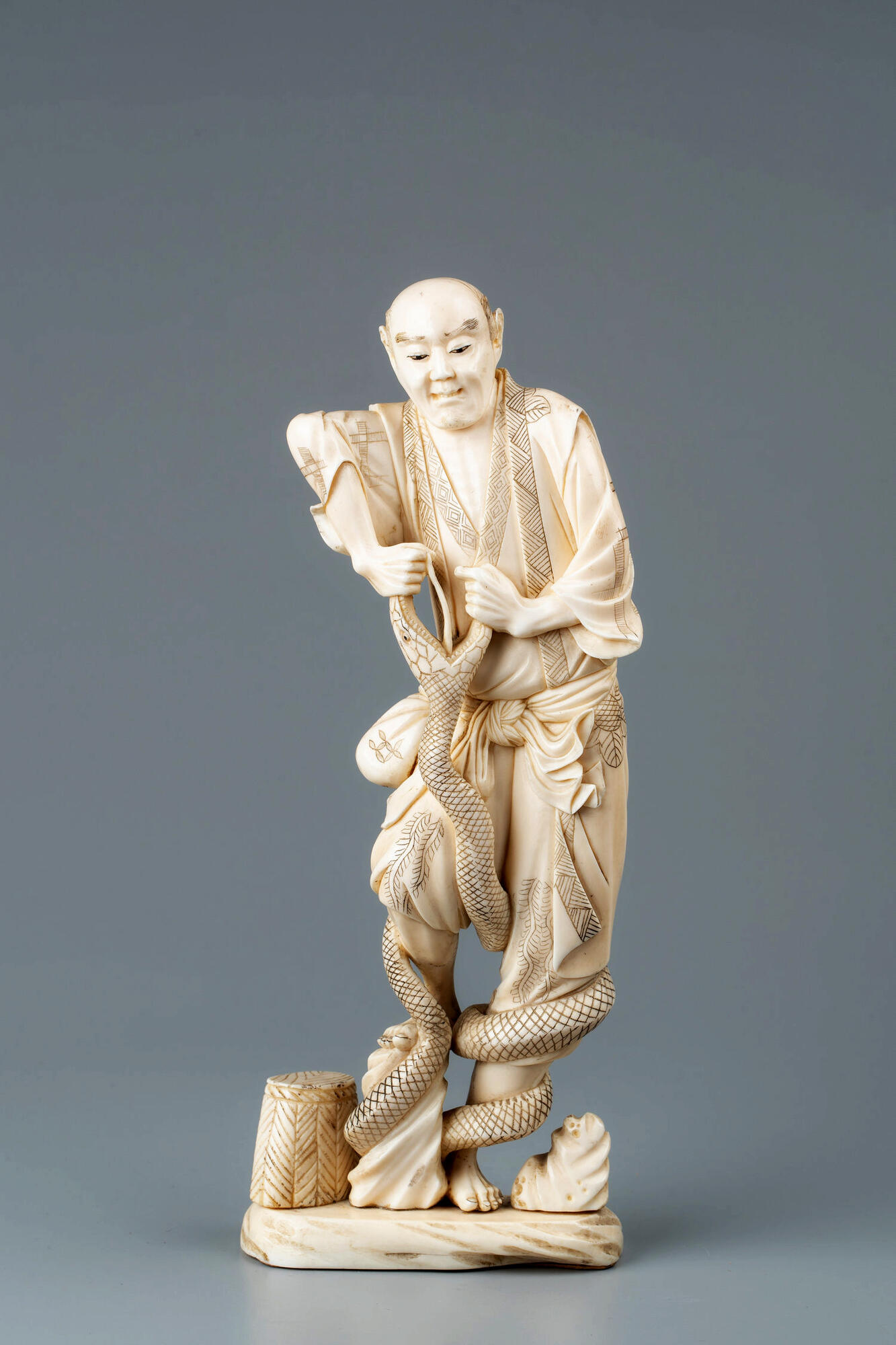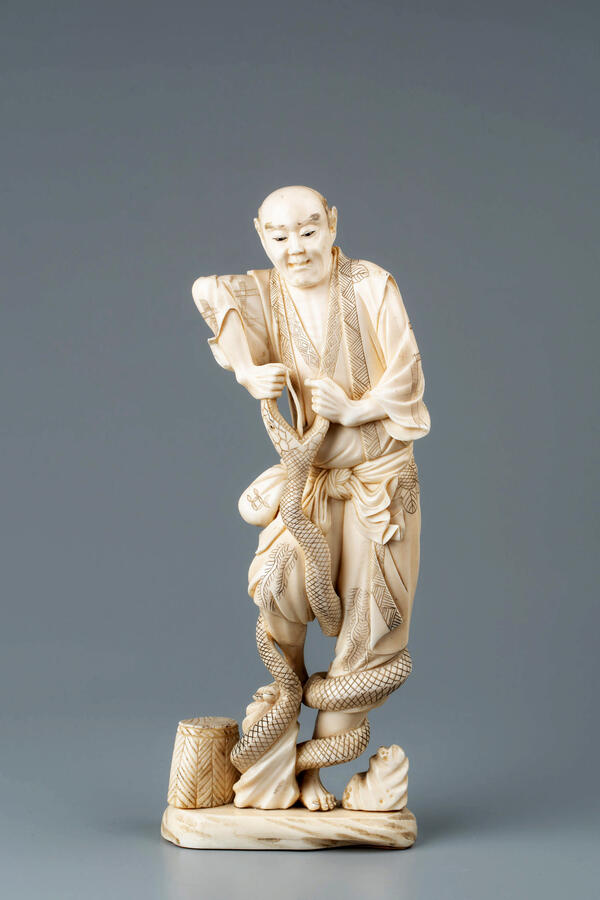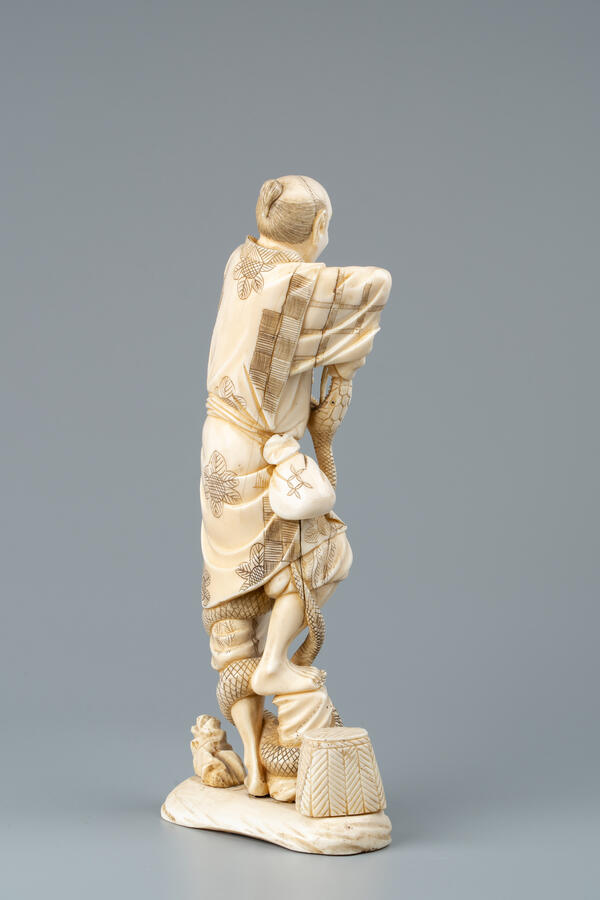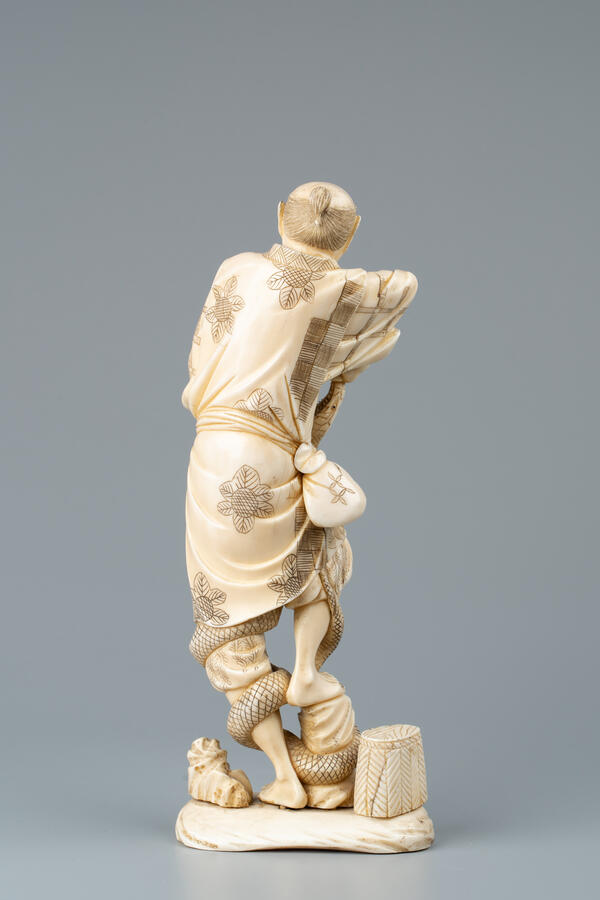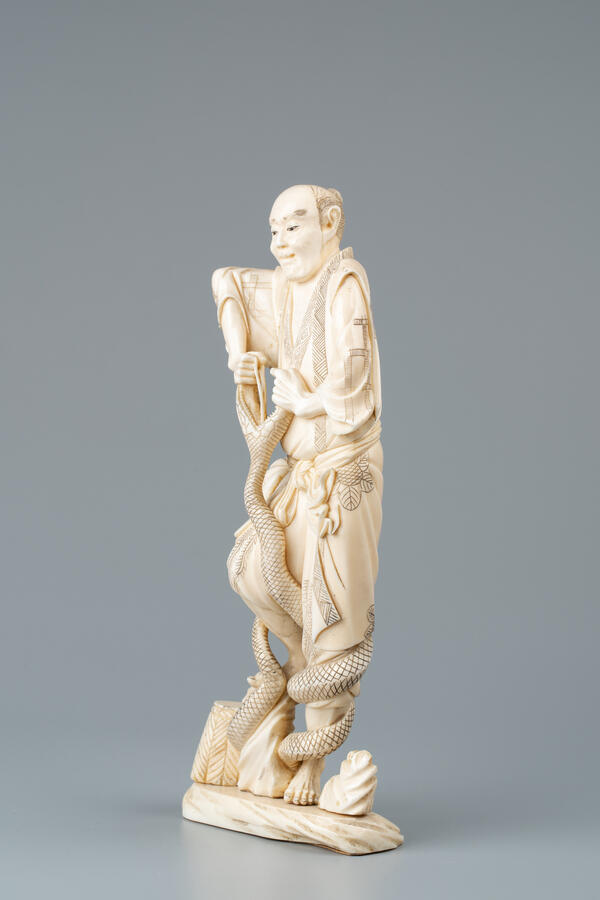The Samara Regional Art Museum houses a small statuette “Susanoo slays the serpent Yamata no Orochi”. It belongs to okimono, a form of traditional Japanese decorative and applied arts.
Okimono are small figurines made mainly of ivory, wood, bronze and silver. Okimono, as a kind of miniature sculpture designed for interior décor, became popular around the 16th century: then it was customary to make a special niche (tokonoma) in houses, in which a pictorial scroll, an ikebana flower arrangement or small statuettes of Buddhas and bodhisattvas were placed.
The protagonists of the miniature sculpture were various characters from history, Japanese and Chinese myths, as well as ordinary peasants and fishermen, women and children, animals, vegetables and fruits. In terms of size and subject, okimono could be very similar to netsuke — pendant charms on traditional Japanese kimonos. However, an okimono does not have holes for attaching the cord and is designed to be placed on a shelf or other horizontal surface. Okimono carvers knew the tastes of Western art connoisseurs, so okimono figurines were made much larger than netsuke — from 20 to 50 cm. The craftsmen detailed, carefully processed and richly decorated their products, inlaid them with corals and mother-of-pearl, engraved with ornaments and tinted then with a tea-based solution. The most valuable material for creating okimono was ivory.
The small okimono sculpture presented in the museum depicts the god Susanoo killing the serpent Yamata no Orochi. This scene is mentioned in one of the oldest Japanese legends.
According to the legend, Susanoo went to earth, where he met the first ever humans Asinazuchi and Tenazuchi. They told Susanoo about their trouble: the snake Yamato no Orochi ate almost all of their daughters. Susanoo asked the old man to have his last daughter Kushinadahime as his wife, and in return he promised to kill the snake. After the man had consented, he turned the girl into a comb and pinned his hair with it. He said to the girl’s parents to cook eight barrels of sake, build a fence around the house and arrange eight gates in the fence. He asked to place a barrel full of sake at each gate. Susanoo’s plan turned out to be successful: after coming for the girl, Yamato no Orochi stuck his heads into sake barrels and, after getting drunk, fell asleep. Susanoo cut the snake into pieces with his sword. In the snake’s middle tail, Susanoo found the legendary sword Kusanagi no Tsurugi (one of the symbols of the power of Japanese emperors).
Okimono are small figurines made mainly of ivory, wood, bronze and silver. Okimono, as a kind of miniature sculpture designed for interior décor, became popular around the 16th century: then it was customary to make a special niche (tokonoma) in houses, in which a pictorial scroll, an ikebana flower arrangement or small statuettes of Buddhas and bodhisattvas were placed.
The protagonists of the miniature sculpture were various characters from history, Japanese and Chinese myths, as well as ordinary peasants and fishermen, women and children, animals, vegetables and fruits. In terms of size and subject, okimono could be very similar to netsuke — pendant charms on traditional Japanese kimonos. However, an okimono does not have holes for attaching the cord and is designed to be placed on a shelf or other horizontal surface. Okimono carvers knew the tastes of Western art connoisseurs, so okimono figurines were made much larger than netsuke — from 20 to 50 cm. The craftsmen detailed, carefully processed and richly decorated their products, inlaid them with corals and mother-of-pearl, engraved with ornaments and tinted then with a tea-based solution. The most valuable material for creating okimono was ivory.
The small okimono sculpture presented in the museum depicts the god Susanoo killing the serpent Yamata no Orochi. This scene is mentioned in one of the oldest Japanese legends.
According to the legend, Susanoo went to earth, where he met the first ever humans Asinazuchi and Tenazuchi. They told Susanoo about their trouble: the snake Yamato no Orochi ate almost all of their daughters. Susanoo asked the old man to have his last daughter Kushinadahime as his wife, and in return he promised to kill the snake. After the man had consented, he turned the girl into a comb and pinned his hair with it. He said to the girl’s parents to cook eight barrels of sake, build a fence around the house and arrange eight gates in the fence. He asked to place a barrel full of sake at each gate. Susanoo’s plan turned out to be successful: after coming for the girl, Yamato no Orochi stuck his heads into sake barrels and, after getting drunk, fell asleep. Susanoo cut the snake into pieces with his sword. In the snake’s middle tail, Susanoo found the legendary sword Kusanagi no Tsurugi (one of the symbols of the power of Japanese emperors).
